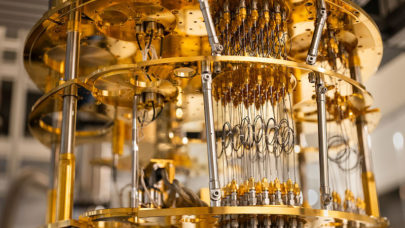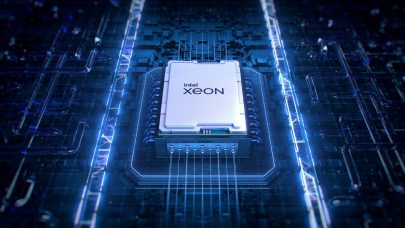After taking last week off to recover from a nasty bug that had me feeling near-death over the course of the weekend, even going so far as to almost ruin my trip to San Diego, where I witnessed an exciting, bottom-of-the-ninth-inning victory by the Padres, I’m back to give you the scoop on this week’s issue of GRIDtoday. For a fleeting moment during my ague, I thought to myself, “Will anyone even notice that my column is missing?” but I soon overcame that train of thought. “After all,” I told myself, “you can’t buy analysis like this.” So, let’s get started.
We begin this week with an interview I conducted with Grant Peterson, vice president of product development for the LexisNexis Litigation Services group, who discussed with me his group’s transition to an application virtualization environment based on DataSynapse’s GridServer solution. I find this story interesting for a couple of reasons, the biggest simply being that it shows yet again just how many business critical processes can be made more efficient by applying grid technologies to them. People like to talk about killer apps and what applications will really drive this technology into ubiquity, but I’m starting to think that’s not necessary. The real key might just be showing that no matter your problem, this technology can help. I’ve read countless interviews with CxOs, IT directors, etc., who stated that they weren’t interested in grid computing because it wasn’t a good fit with the applications they were running (i.e., they weren’t running risk calculations, doing protein modeling, doing crash analyses for automobiles, etc.), but, my friends, neither is LexisNexis. With its Applied Discovery application, the company is (in overly simple terms) processing, converting and organizing legal documents for review by legal teams in the discovery phase of their cases — yet another novel use for the technology. Grid: It’s not just for HPC anymore.
And speaking of DataSynapse, the second reason I find this story interesting is how sold Peterson and LexisNexis are on the DataSynapse definition of “grid,” which it now uses only when referring to shared compute resources. As for its technology, that’s called “application virtualization.” I had the chance recently to speak with DataSynapse’s CMO, Kelly Vizzini, who filled me in on why and how the company evolved and moved away from the traditional grid market. Among the reasons she gave, the one that stuck with me the most is that DataSynapse is “all about the application,” and grid computing often connotes a process that is invasive to the application layer — something she insists her company’s solutions are not. In fact, she noted, some customers are up and running in just a couple months, with very little — sometimes zero — rewriting of code. From what I gather, this was the case with LexisNexis, who already had the grid, but just needed to virtualize their production environment to increase throughput. With all the customer wins DataSynapse announces, it must be doing something right — whatever it chooses to call its technology.
I also wanted to discuss an announcement from last week’s issue, that being “Cambridge Uses Utility Computing for Astronomy Research.” I had a chance to speak with Jim Lewis of the Cambridge Astronomical Survey Unit, who shared some details of the work his group is doing using Kognitio’s massively parallel database platform. While it’s always interesting to hear what kinds of results people see when they run previously single-machine jobs across a parallelized HPC platform — from a couple of hours to just under 6 seconds, in this case — what stood out to me was how pleased Lewis and his team were with the utility model they used for their CPU power. Although the trial with HP’s Flexible Computing Services ended around Christmas, the experience left Lewis feeling that the old model just won’t suffice anymore. Although CASU won’t likely be going back to HP for its utility computing needs (universities, he noted, like to keep things in-house, if possible), he wouldn’t mind sharing resources with the new HPC facility opening on the Cambridge campus. “The whole experience has been very, very positive,” he told me. “It’s the sort of thing where I think it really is a way of looking forward with these sorts of problems. Certainly, the status quo is not an option, because we’ll just sink.”
Getting back to this week’s issue, I want to draw your attention to the announcement of Platform’s new financial services hires. The company really is making a push in this field — remember, the latest release of its Symphony solution was geared toward the financial community — and it will be worth watching how this pans out in terms of customer wins and implementations in this vertical market. I’m expecting to get some firsthand info from Platform this week, so stay tuned for more on this market play.
Also this week, IBM announced its coalition to spread adoption of Big Blue’s Intelligent Utility Network technologies. While the announcement doesn’t specifically cite use of grid computing in building these networks, a lot of the terminology used points toward that conclusion. I’ll try to look into this one, as well, but I would encourage you to read the announcement and decide for yourself if IBM is, indeed, using grid computing to maximize the effectiveness of its namesake, the power grid.
As for the rest of the issue, I would direct eyes to the following announcements, which run the gamut from big science to SOA: “SDSC Enables Virtual Structure Performance,” “Microsoft, REN-ISAC to Enhance Information Sharing Security,” “WS-BPEL Ratified as OASIS Standard” and “Aberdeen Group Reveals SOA Roadblocks, Best Practices.”
Finally, I’ve been following with some interest (as if I could escape it) the story of PlayStation 3 and Folding@Home. In the latest turn of events, after seeing how much power the PS3s have added to the distributed computing project, it seems as if Sony is interested in having owners donate their spare CPU cycles to businesses that could use some extra power. I don’t know how I feel about this. On the one hand, it’s nice to see yet another use of the technology that is responsible for paying my bills. As I noted about LexisNexis, I like seeing any new, novel uses of grid — or, in this case, distributed — computing technology, and having some teenager’s video game console providing compute resources to a pharmaceutical firm on the other side of the country certainly would qualify as novel. It also would be among the most unique lines of business of which I’ve ever heard.
On the other hand, however, I’m sad to see Sony looking to make a buck off of this so soon. I don’t know how much they could charge for such a seemingly unstable service, and I don’t know what they could possibly offer PS3 owners to convince them to keep their units working overtime, but I’m guessing they would find a model that benefits everyone involved — most of all Sony. Faced with a profit versus altruism decision, I think I know where most PS3 owners would place their allegiances. Truth be told, I can’t say I would blame them (you’ve got to offset the huge pricetag somehow), but for a little while there, the future of large-scale distributed computing projects looked brighter than ever.
—–
Comments about GRIDtoday are welcomed and encouraged. Write to me, Derrick Harris, at [email protected].




























































